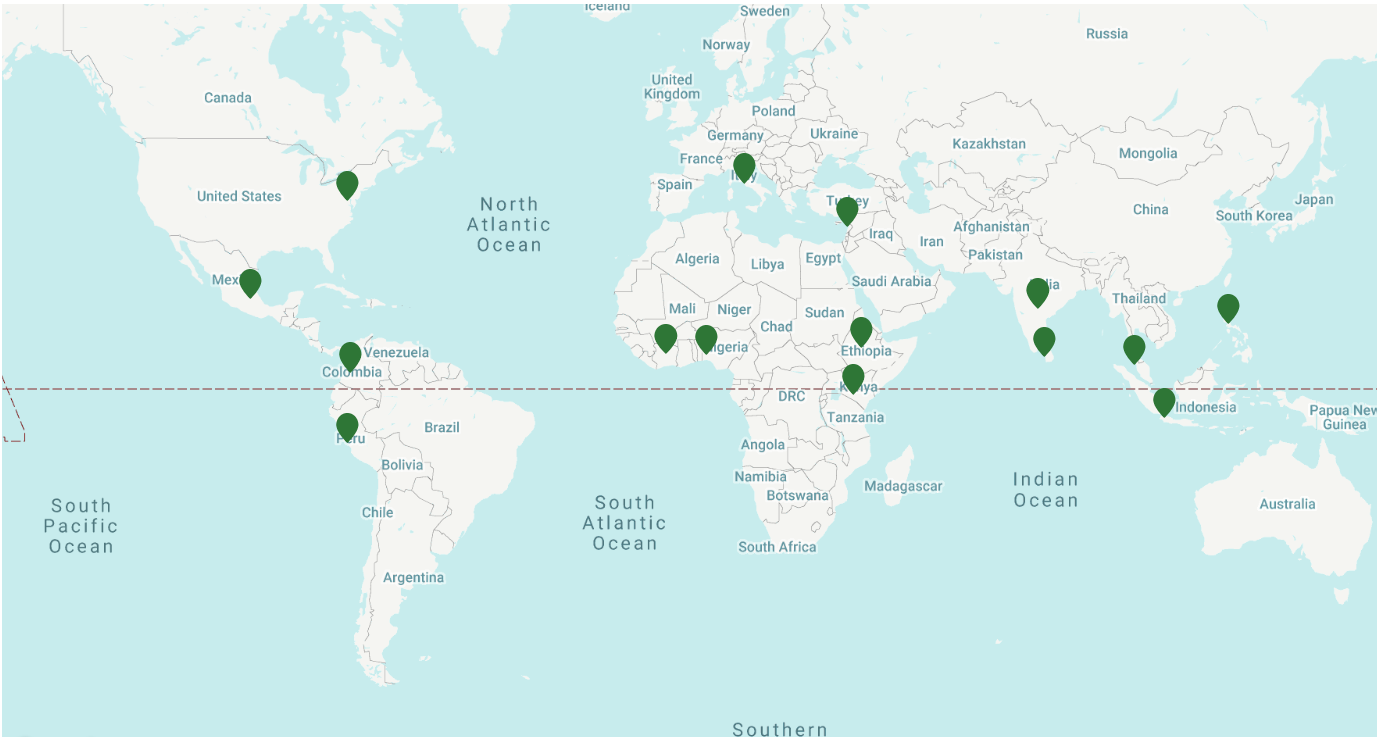Knowledge Commodities Across the Rio Bravo/Grande Border and then some in Green Rev Mexico
You have to go and to come back with the 'things' if your moves are not to be wasted. But the 'things' have to be able to withstand the return trip without withering away. Further requirements: the 'things' you gathered and displaced have to be presentable all at once to those you want to convince and who did not go there. In sum, you have to invent objects which have the properties of being mobile but also immutable, presentable, readable and combinable with one another.
-- Bruno Latour, "Visualization and Cognition: Drawing Things Together," in Knowledge and Society: Studies in the Sociology of Culture Past and Present, ed. H. Kuklick (Jai Press vol. 6: 1986), 7.

the mutable hardly-mobile arduously presentable knowledge-bearing object
. . . a change in either technology or organization will create tension for subsequent adjustment in the other.
E. Walter Coward and Wayne A. Schutjer, “The Green Revolution: Initiating and Sustaining Change,” Civilisations 20, no. 4 (1970), 473.
both the modifications of the biosphere and the political economic structures have a history that affects subsequent efforts to change either the technology or the social structure of agriculture.
John Perkins, Geopolitics and the Green Revolution (Oxford: Oxford UP, 1997), 103.
for example, one can construct theoretical models of the diffusion process given certain assumptions and compare the results with those actually observed in the real world. On the basis of such a comparison, one can infer whether a given item is ‘contagious’ or not . . ..
Elihu Katz, Martin Levin and Herbert Hamilton, “Traditions of Research on the Diffusion of Innovation,” American Sociological Review 28, no. 2 (April 1963), 242-43.
- material transfer
- design transfer
- capacity transfer
Three phases of international technology transfer:
-- V. W. Ruttan and Yujiro Hayami, “Technology Transfer and Agricultural Development,” Technology and Culture 14, no. 2 (April 1973), 124.
Unlike Latour’s immutable mobiles (mostly writings and mechanical experimental devices that read or work the same almost anywhere) agricultural material technologies are embedded within ecological and cultural localities — even the transferability of immaterial agricultural techniques is contingent upon ecological, climatic, and cultural conditions. For these reasons, for agricultural (or any biotechnological) intervention the “material transfer” and “design transfer” types of technoscientific intervention are inadequate. The successful transfer of agricultural technology necessitates an intervention in the epistemic institutions and mentalities of the target nation.

-- David M. Jones, “The Green Revolution in Latin American: Success or Failure?,” Conference of Latin Americanist Geographers Publication Series 6 (1977), 58.

CGIAR Member Institutions
AHA2018Presentation
By Paul Kelley Vieth
AHA2018Presentation
- 619



